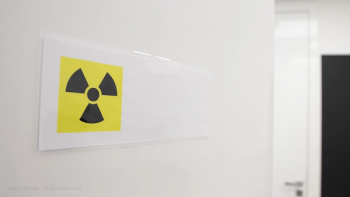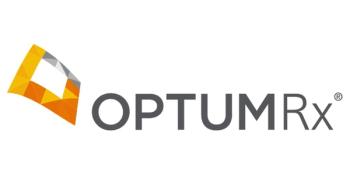
Orphan Drug Loophole Shields Blockbuster Drugs From Price Negotiations
Key Takeaways
- The One Big Beautiful Bill Act exempts orphan drugs from Medicare price negotiations, affecting high-revenue drugs, especially in oncology.
- Manufacturers may prioritize developing drugs for rare diseases first, delaying negotiations for common condition treatments.
A provision in the One Big Beautiful Bill delays or exempts high-spending medications with orphan indications from Medicare drug price negotiations.
When Congress designed the Orphan Drug Act in 1983, lawmakers had a noble goal: to incentivize pharmaceutical companies to develop treatments for rare diseases, those that impact fewer than 200,000 patients, that they wouldn’t normally invest in. Four decades later, a budget reconciliation law has created a loophole that would shield orphan drugs from Medicare price negotiations.
Tucked into the new One Big Beautiful Bill Act is a provision that delays Medicare price negotiation for drugs with orphan indications. Two separate analyses published in Health Affairs in August have found that some of these products that will be exempted from or have delayed price negotiations are blockbuster drugs that generate billions of dollars in sales.
Under the Inflation Reduction Act of 2022, CMS was able, for the first time, to negotiate prices of certain prescription medications. The first and second groups of drugs negotiated were covered under Medicare Part D. In 2026, CMS will choose 15 therapies for negotiation that can be Part D or Part B drugs, with new prices to take effect in 2028. The Inflation Reduction Act specifies that CMS can negotiate drugs that reach annual gross Medicare spending of $200 million or more and that have been on the market for at least seven years for drugs or 11 years for biologics. Some drugs with orphan indications were excluded.
Now, under the One Big Beautiful Bill Act, which was signed into law in July 2025, drugs treating only orphan conditions are completely exempt from price negotiations. Additionally, drugs with both orphan and common indications now have their negotiation timelines delayed, with the clock starting only when they receive approval for treating common conditions. The changes take effect in 2028.
“We have a very large number of drugs that are actually blockbusters — they’ll generate billions of dollars in revenue a year — that are orphan drugs or that have an orphan designation,” Anna Kaltenboeck, a health economist and president of Verdant Research, said in an interview. “We’ve created this construct now where some drugs treat a lot of orphan conditions, nothing that’s common, and they’re now exempted as well, even if they reach that high spending threshold.”
Kaltenboeck said manufacturers are now incentivized to develop drugs first for rare indications before researching therapies for more common conditions. “Oncology drugs are some of Medicare’s highest for drug spending because of the age of patients and because of the cost of drugs. A lot of oncology products start with the orphan conditions and then more indications [are added] as proof of concept comes in for the common conditions,” she said.
Assessing the new bill
Kaltenboeck is a coauthor of
They found that nearly one-third of high-spending drugs projected to meet the $200 million spending threshold by 2030 will be exempted or delayed because of the new provisions. Additionally, 42% of high-spending Medicare drugs have at least one orphan indication, and of the 43 drugs that could be exempted from negotiation, 20 are indicated for oncology.
This research also found that 10 drugs could qualify for a delay in their negotiation eligibility under the One Big Beautiful Bill Act because the approval date of their nonorphan indication is later than that of their first approval for any indication. These drugs accounted for $13.8 billion in Medicare Part B fee-for-service and Part D spending in 2023.
Many of these are billion-dollar oncology blockbusters, such as Keytruda (pembrolizumab) and Opdivo (nivolumab), with the new bill delaying negotiation by up to 10 years. Keytruda, which received its first approval in 2014 for patients with advanced melanoma with a BRAF mutation, is now approved for 41 indications. Several of the conditions that Keytruda treats are rare cancers, such as biliary tract cancer, Merkel cell carcinoma and a rare subtype of non-Hodgkin lymphoma. Keytruda is Merck’s best-selling product, with 2024 sales of $29.5 billion.
Opdivo was also first approved in 2014 to treat patients with advanced melanoma who have a BRAF mutation. It has more than 30 approvals alone or in combination, including for rare cancers such as malignant pleural mesothelioma, a rare subtype of small cell lung cancer, and a subtype of colorectal cancer. Opdivo is the top-selling drug for Bristol Myers Squibb, with 2024 sales of $9.3 billion.
A
Cost implications
The
Medicare beneficiaries will face continued high copayments for these medications, while taxpayers bear the burden of inflated drug spending.
Looking forward, Kaltenboeck suggests the new bill undermines aspects of the Inflation Reduction Act, which she said funded the $2,000 annual cap on out-of-pocket prescription costs and payment smoothing options through savings from drug price negotiations. She expects insurance premiums to rise as beneficiaries bear the cost for these new protections on orphan drugs.
Newsletter
Get the latest industry news, event updates, and more from Managed healthcare Executive.




















































